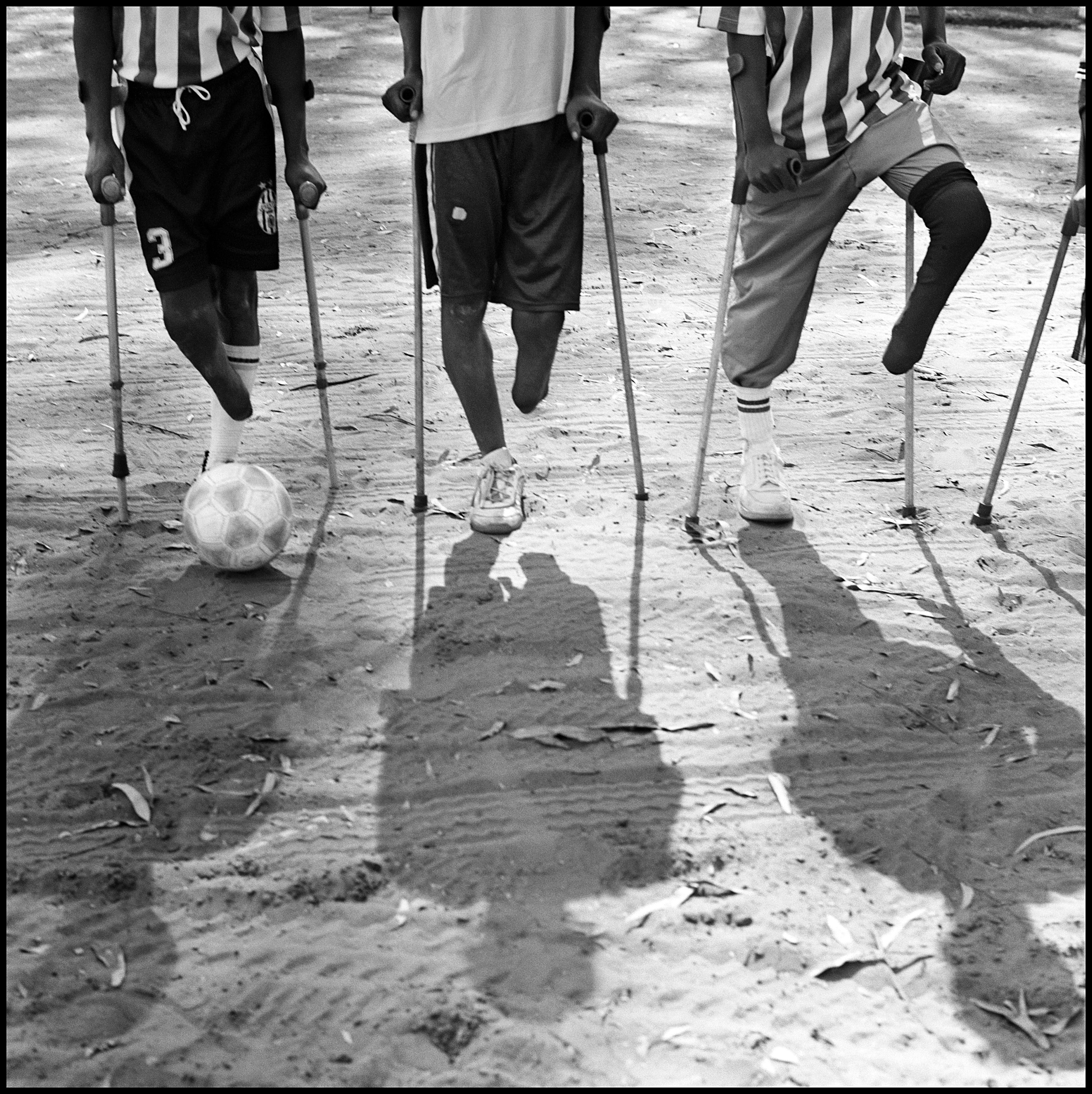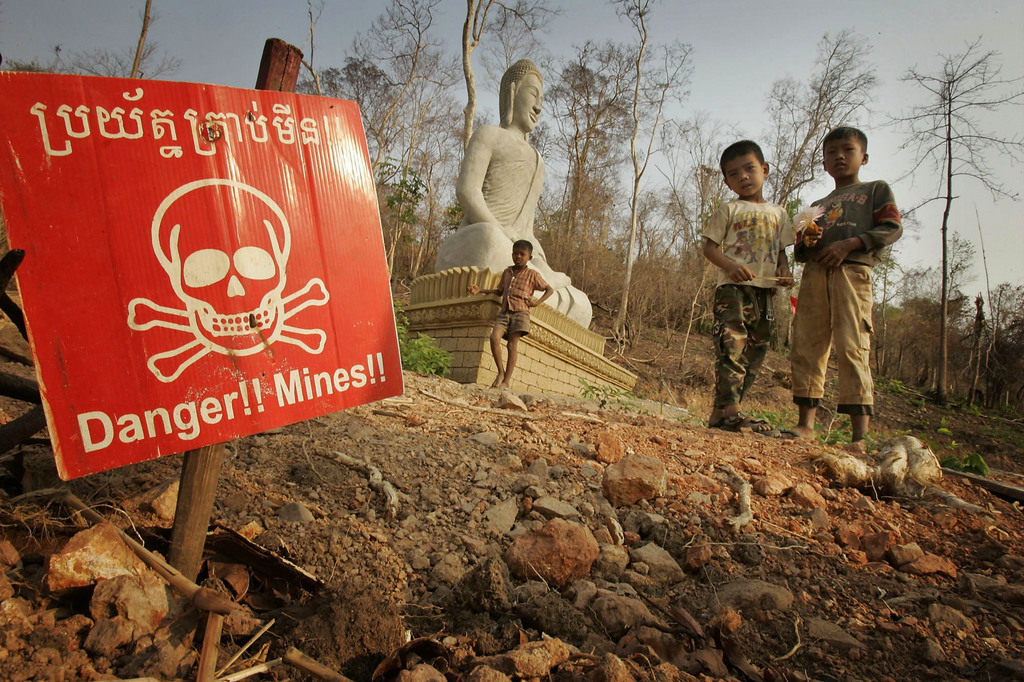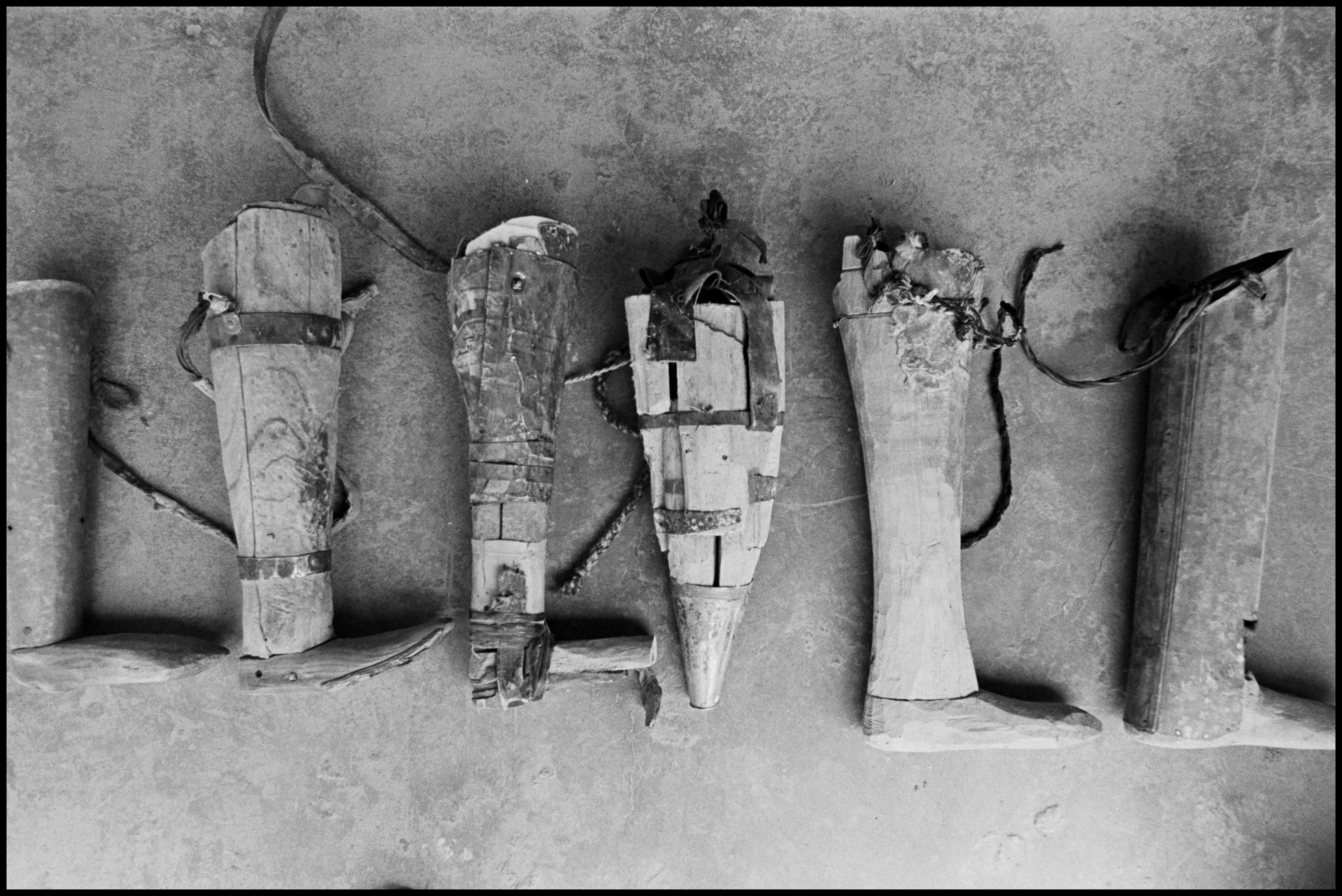The man who walks through minefields

Hostile territory, difficult weather conditions and, worst of all, hidden explosives ready to blow up at the first false move: Working in a minefield takes a great deal of courage and concentration. But the greatest danger lies elsewhere.
On a table in Thun military barracks, Sergeant Roman Wilhelm shows us two plastic boxes – two containers of death. Inside are different types of landmines: anti-personnel and anti-tank mines, ones made of plastic and metal, round ones and long ones.
Some are designed to explode at the slightest pressure, others need a chemical reaction to detonate.
Wilhelm, aged 32, has been a deminer since 2004. The former electrical technician from Zurich works at the Explosive Ordnance Disposal (EOD) Centre of the Swiss army.
To qualify for this specialised work he took training abroad.
After an initial mission of eight months in Eritrea, the professional soldier served in Albania, Somaliland (an East African state not recognised by the international community) and Laos, which are among the countries most contaminated by mines and unexploded ordnance.
Locating landmines
Before entering a minefield, explains Wilhelm, you have to think about where the mines might be.
“In the West, mines have usually been laid in a fixed pattern. There are also minefield maps, which facilitate our work. In poorer countries, on the other hand, mines may seem to be laid without any apparent system.”
However, he goes on, “people can be extraordinarily innovative when it comes to killing each other.”
Upon studying the country’s history and talking to the locals, it may become clear that nothing was done by chance after all.
“In Eritrea we found mines 15 metres from the trenches. That caught us by surprise – here no-one would think of doing anything like that. But talking to the locals, we came to realise that it was part of a retreat strategy.”
With or without a map, he emphasises, pinpointing mines is a difficult task. “Landslides or flooding may change the original location. In Albania we found one mine that had moved 200 metres.”
Centimetre by centimetre
On the ground, deminers proceed slowly, holding instruments that look rather like gardening tools. “Our main tool is a metal rod: it serves to pinpoint wires connected to mines,” explains Wilhelm.
Using shears, small sickles and cutters, they then remove vegetation from the surrounding area. This can be time-consuming work. “What was once a bush has meanwhile grown into a tree,” he says.
To localise the mine itself, they rely on a traditional metal detector. The deminer himself has to determine the exact position – this is the most delicate phase of demining.
“We sound the ground out with a prodder, which is a stiff pointed wand. We make a hole every centimetre till we encounter some resistance. With experience, you are able to tell if this is a metal fragment, a piece of wood or a rock.”
When you are lying on the ground, a few inches from a bomb, caution is definitely indicated.
“Small mines may suddenly flip over. You have to be careful to avoid the tip of the prodder pressing the top part. Some mines have an extra grenade attached: just when you have got them out, the grenade explodes.”
Wilhelm adds that mines are getting more sophisticated all the time. “They may contain only a very small quantity of metal. So they are that much harder to pinpoint with a metal detector.”
Using dogs would mean the work could proceed more quickly, he notes. “But that costs more. Dogs have to be trained, then kept in quarantine and acclimatised to the new territory, and to new smells.”
Heat and sweat
Deminers usually work in pairs: one is on the ground while the other monitors the situation from further away, Wilhelm explains.
“There may be animals that get into the perimeter. Then we have to stop for safety’s sake. I have even seen people come across the field I was demining…”
Doing this work for longer than 20-30 minutes at a stretch can also be hazardous.
“In Africa the temperatures are very high: the heat and the sweat make you lose your concentration. And when you are on the ground you can’t afford to let yourself get distracted. You need to have your mind totally alert, even if you haven’t slept well, or just had a quarrel with your girlfriend,” he explains.
The principal danger is your own state of mind, insists Wilhelm.
Fortunately he has never witnessed an accident although “there are enough of them” as he says. In a United Nations document it is estimated that for every 5,000 mines disarmed, one deminer is killed and two others are injured.
As protective gear, Wilhelm wears an armoured suit and a helmet with a visor. “If there is an explosion the shock wave will hit the protective gear. But there is always a risk of injury to your hands or damage to your hearing.”
The principal threat during an overseas mission has nothing to do with bombs anyway. “From all the reports on demining operations, it turns out that the main hazard is not the minefields, but road accidents.”
Ritual football match
Whether it is in Africa or in Europe, the deminers always establish a unique type of relationship with the locals, Wilhelm says.
“The greatest feeling of satisfaction for me comes from being able to hand fields back to their rightful owners. I know that where I have been there will be no more accidents involving mines.”
As part of the festivities put on in their honour by local residents, the deminers have a very original way of celebrating the clearing of mined areas – and of showing even the fearful that all the mines are gone.
“It’s our ritual: we put on a football match.”
Until the 1980s mine clearance was a military responsibility.
In 1988 for the first time the UN launched a fundraising action to help Afghanistan deal with the humanitarian problems caused by anti-personnel mines.
Afterwards various anti-mine NGOs were created. They include Halo Trust, Mines Advisory Group and the Swiss Foundation for Mine Action.
There are basically three approaches to finding and disposing of landmines: manual demining (using a metal detector), mechanical demining (using large bulldozer-type vehicles), and demining with trained animals (usually dogs, but also, in Africa, Gambian giant rats).
The choice of approach mainly depends on the terrain (it is hard to use vehicles in mountainous areas, for example) and the budget available.
More unusual methods involve the use of bees, sea-lions and dolphins (in the case of sea-mines), fluorescent bacteria, or even electromagnetic and sound waves.
Removing one mine costs between $300 and $1,000 according to UN estimates.
(Translated from Italian by Terence MacNamee)

In compliance with the JTI standards
More: SWI swissinfo.ch certified by the Journalism Trust Initiative



You can find an overview of ongoing debates with our journalists here. Please join us!
If you want to start a conversation about a topic raised in this article or want to report factual errors, email us at english@swissinfo.ch.